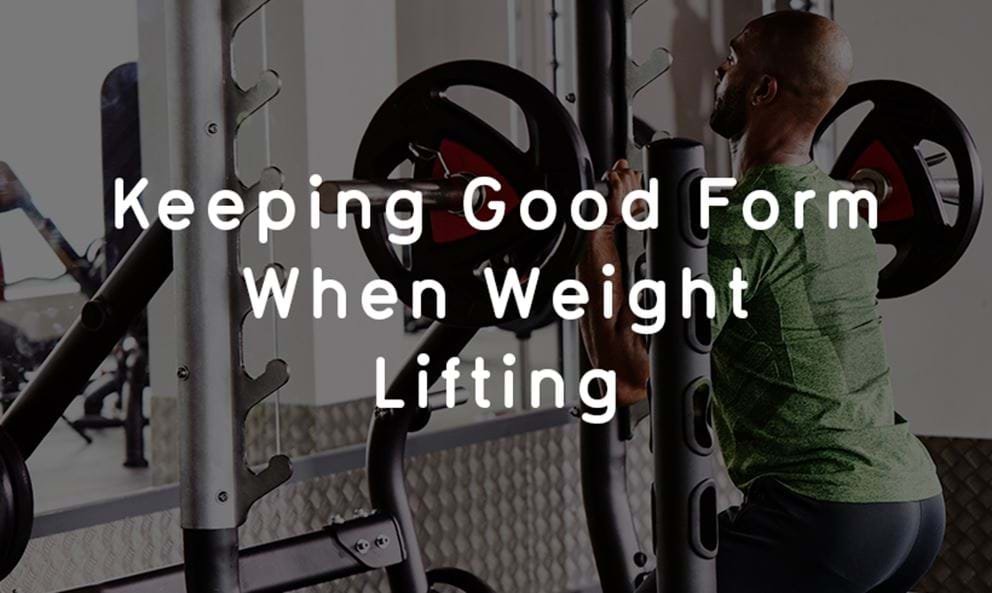Keeping Good Form When Weight Lifting

If you’ve been around in the fitness world for any length of time, you’ve probably heard a lot about how important proper form is.
It’s a pretty simple concept, yet far too many gym aficionados – even experienced ones – end up cutting corners.
Here’s a look at some of the risks of using bad form when lifting, as well as a few simple principles to help get you on the right track.
Bad form can injure you, badly
This is the most important point. Unsurprisingly, resistance training places a heavy strain on the body. With studies showing that weight training injuries in the US increased by nearly 50% from 1990-2007, lifting clearly isn’t risk-free.
Let’s focus on one of the most vulnerable areas of the body: the spine.
The spine is made up of a series of bones stacked one upon the other and cushioned by gelatinous discs. When the spine is kept straight, and the abdominal and back muscles are engaged to support the spinal column and hold it in place, any external force is dispersed through the entire spinal column and supporting muscle structure.
When the back is rounded, however, excessive force is placed on certain sections of the spine, and the ability of the body’s core muscles to compensate for the strain is greatly diminished. The result is likely to be a slipped disc.[1]
Bad form works the wrong muscles
As well as increasing your risk of injury, poor form can also result in the wrong muscle groups being targetted. This can be pretty frustrating when you’re trying to fix a muscle imbalance.
Here’s an example: you do a seated dumbbell shoulder press to work your delts. Done correctly, you would keep your back straight, press the weights in a controlled manner above your head and then lower them again.
But what if you found that you couldn’t lift half as much as you’d like doing the exercise with strict form?
Well, one common ego-based mistake would be to lean further and further back during the exercise. At some point, you’d find yourself being able to press much more weight.
And that might feel good.
In reality, though, you would simply have reduced the tension on your shoulders and placed more of the load on your pecs. Congratulations. You’re now doing an elevated chest press.
Bad form creates a false sense of progress
Another cost of bad form (and too much ego) is a false sense of achievement through cheated lifts.
A good example of this would be when performing a bent over row, aimed at targeting your lats. Done correctly, you’d keep a straight back, bend at the waist, keep your lower body stable, and lift the weight in a controlled manner.
A common ego cheat, however, would involve going into a half squat and then springing your hips up as you lift the weight.
While this might allow you to “hit a new personal record,” all you’ve actually done is let momentum lift the weight for you, with your lats doing far less work than they otherwise would.
Needless to say, it’s hard to make real progress when you don’t have an accurate idea of your actual strength.
Principles of good form
Here are some key principles of good form:
- Keep your back straight and your abs tight during each lift. This helps to support the spine, prevent injury, and target the correct muscle groups.
- Perform each rep in a slow, controlled manner, both during the positive and negative phases of the lift. This prevents you relying on momentum or losing control and dropping a weight on yourself.
- Don’t ego lift. Lift weights that you can control for the required number of reps and don’t get ahead of yourself. Trying to do too much, too soon, only encourages you to cheat.
[1] http://www.healthline.com/health/herniated-disk#Overview1


